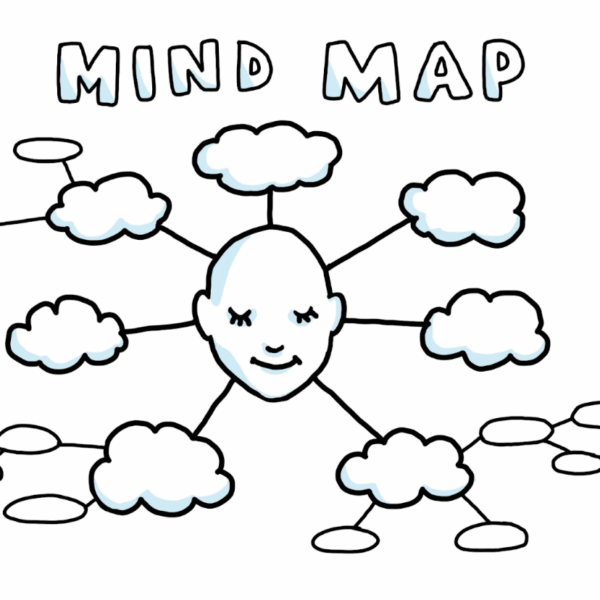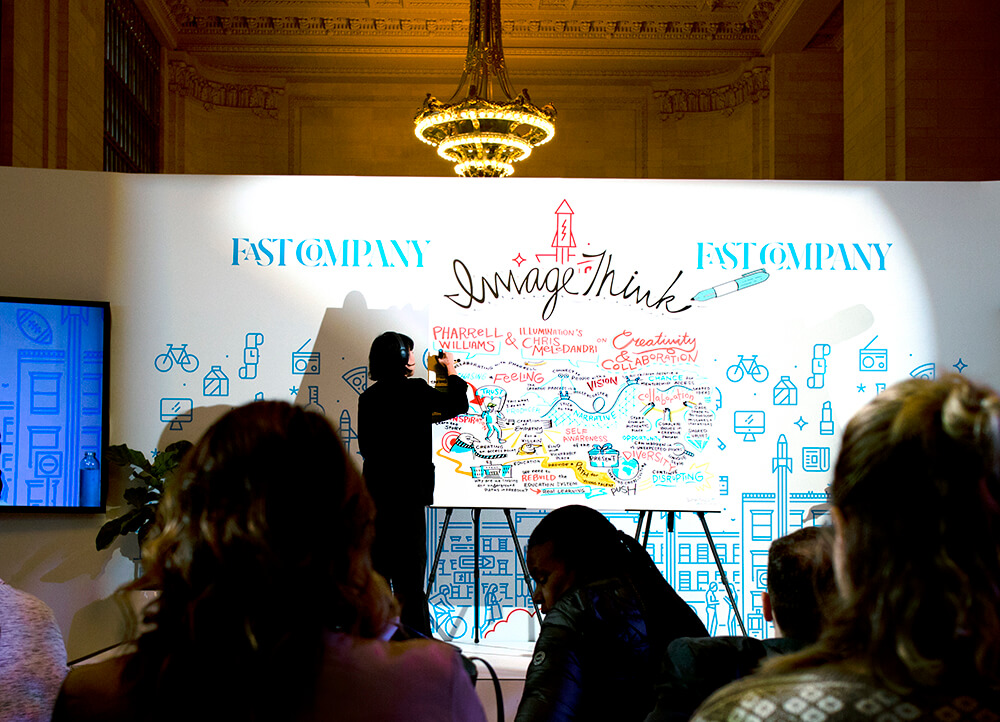
3 Ways To Enable Creative Problem Solving, from Fast Co’s Innovation Festival
At Fast Company’s Innovation Festival, hosted in NYC last week, one theme kept cropping up: In a world of increasing competition, creativity and empathy will no longer be add-ons. They will be fundamental necessities to staying relevant and successful. Here at ImageThink, we couldn’t agree more. After all, it’s our mission to bring creative perspectives into business through graphic recording, infographics, and visual solutions to complex problems.
The Innovation Festival’s keynote speakers held the stage at the 92nd St Y, but their sessions were beamed live into Grand Central Terminal’s Vanderbilt Hall, where ImageThink’s graphic recorders captured speakers’ insights in real time. Inspired by these remarkable thought leaders, we’ve shared guidelines on how to infuse your own business with creativity and empathy, so you can innovate and grow.
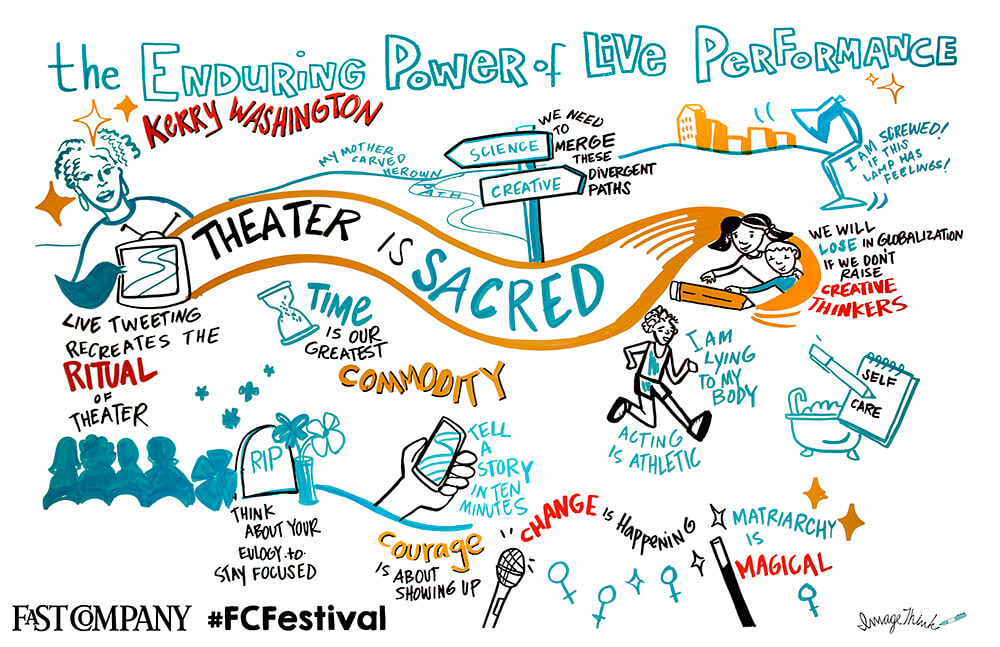
Kerry Washington spoke to the importance of not letting fear dissuade you from pursuing your goals, as captured here in our graphic recording.
1. Embrace fear and find your organization’s creative path.
When we think of growth leaders, we often think of someone impervious to uncertainty or fear. However, at ImageThink we know that the opposite is true. Powerful leaders aren’t fearless—they simply don’t let the natural anxiety that comes from growth keep them from moving forward. In fact, they recognize uncertainty as a sign that growth is happening and instead of shying away from it, they investigate it.
Having trouble sitting with uncertainty? Try this simple sketchnote template: On the left hand side of a page, make a list of issues you are facing right now, making sure that they are specific and discrete. On the right hand side of the page, make a list of actions you can take to address those issues, and tag them with timeframes from 1 day to 1 month. It may seem simple, but it’s a powerful way to turn general anxiety into fuel for real progress.
In her Innovation Festival interview, actress and producer Kerry Washington described her mother as an inspiration for embracing fear and growing through it. The first of her siblings to graduate college, Dr. Valerie Washington went on to gain a doctorate in early childhood education. And though she confessed to great fear of public speaking, she lectured to crowded halls of students at Lehman College. Courage and creative growth isn’t about lack of fear—it’s about feeling that fear and showing up despite it.
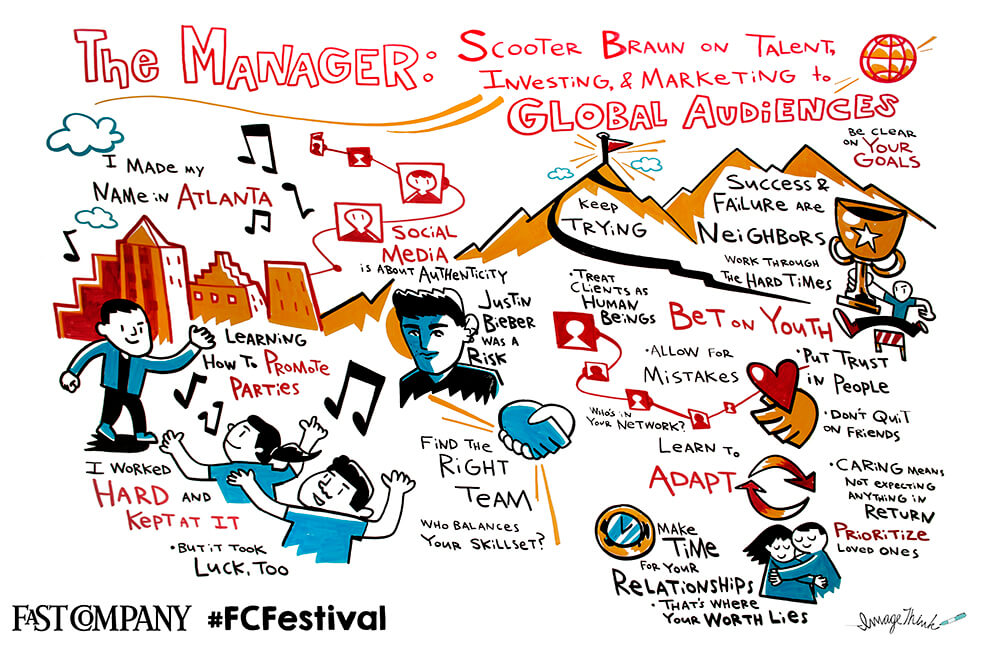
Talent manager Scooter Braun gave insights into the importance of empathy in the business place.
2. Respond to failure with empathy.
We’ve already said that with growth comes uncertainty. There’s something else it comes with too: failure. Any new venture or growth opportunity necessarily comes with the potential to fall flat, go sideways, turn belly up. And with that in mind, it is absolutely crucial that failure in the workplace be met not with derision—but with empathy. That’s because innovation is only possible in companies where failed attempts are viewed with compassion.
Now, we’re not saying that the failure to get to work on time should receive a standing applause. But missing the mark because you have stretched your capabilities is a noble thing. If you’re not sure how to bring this mindset into your company culture, try what several of our own clients do: build “risk-taking” into your annual review metrics. This encourages team members to shoot higher than they would otherwise feel comfortable doing for fear of falling short, and makes it clear that their leaders won’t judge them for doing so.
Talent manager Scooter Braun exemplified the importance of an empathy his Innovation Festival interview. In growing and managing clients like Justin Bieber, Ariana Grande, and Psy (that’s right, gangnam style!), he’s embraced the risk of betting on young talent. But more than that, he’s committed himself to being a supportive presence for his clients during their inevitable rough patches. If risk is essential to prospective growth, then an empathetic response to failure isn’t only the right thing to do. It’s necessary in order to continue to function sanely and successfully.
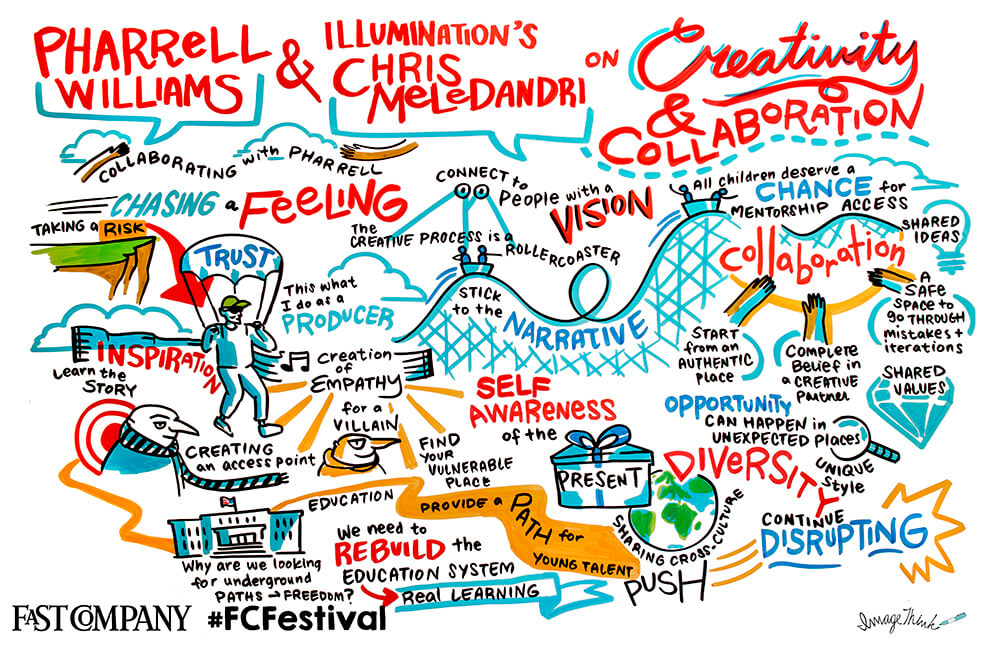
3. Be courageous and collaborative.
Pop culture legends often paint the creative process as one of solitary genius. But very few great works—whether in the arts or the business world—are created alone. As a small team of creatives, we know the immeasurable value that collaboration brings to the table when solving tough problems or developing new ideas.
As a business leader, it’s your job to create an environment where creative collaboration is possible. That means one where people feel safe sharing untested ideas, and courageous enough to take feedback.
Having trouble getting your team to open up? Set ground rules for ideation sessions before you even begin. Clearly state the goal of the brainstorm so that if the conversation shifts, you can bring it back on track. Additionally, have your team commit to the “yes, and” rule, which asks that people build on new ideas rather than dismiss them right out of the gate.
Musical powerhouse Pharrell Williams and Illumination producer Chris Meledandri described their creative collaboration as one of candid feedback couched in trust and respect. For each song that made it onto the Despicable Me soundtrack—including that catchy hit, “Happy,” Williams revealed that there might be ten that got left on the cutting room floor—what Williams called an album’s worth of nixed attempts. What allowed Williams to take that feedback and keep moving forward was his faith that the feedback he received was not a personal slight, but in service towards the larger goal of the film.
Want your next event to have as much creative impact as Fast Co’s Innovation Festival? Check out our graphic recording services to learn ways that real time visuals can help bring your event to the next level and turn major insights into instantly shareable content.
